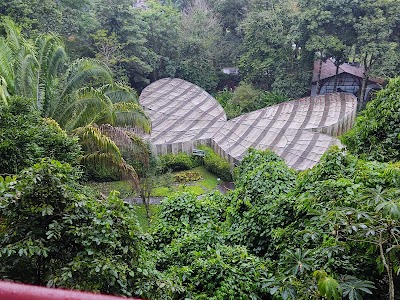Mount Lamington (Mount Lamington)
Overview
Mount Lamington: A Volcanic Marvel
Mount Lamington is a striking volcanic mountain located in Oro Province, Papua New Guinea, rising majestically to approximately 1,680 meters above sea level. Named after Charles Cochrane-Baillie, Baron Lamington, the 12th Governor of Queensland, this mountain is a captivating natural landmark that draws both attention and reverence.
Situated within the Pacific Ring of Fire, Mount Lamington is part of a region notorious for its seismic activity, including frequent earthquakes and volcanic eruptions. The mountain was relatively obscure until its catastrophic eruption on January 21, 1951, an event that would become one of the deadliest volcanic occurrences in the area’s history.
The eruption was preceded by a series of earthquakes felt throughout the surrounding areas. Locals reported unusual animal behavior and changes in nearby water sources, signs that nature was stirring. On that fateful morning, a massive explosion erupted, propelling a colossal column of ash and gas into the atmosphere. Pyroclastic flows—comprised of hot gas, ash, and volcanic rocks—surged down the slopes with devastating speed, annihilating everything in their path.
This tragic event resulted in the loss of over 3,000 lives, primarily due to the ferocity of the pyroclastic flows and the fires they ignited. The nearby town of Higaturu was entirely obliterated, leaving a deep and lasting scar on the community.
In the aftermath of the disaster, international aid poured into Papua New Guinea, with scientists from around the globe arriving to assist in relief efforts and to study the volcanic activity. One prominent figure was volcanologist Tony Taylor, who conducted in-depth research on Mount Lamington. His studies significantly advanced the understanding of pyroclastic flows and enhanced methods for volcanic hazard assessment, laying the groundwork for future research and disaster preparedness in volcanic regions worldwide.
Geological Composition
Geologically, Mount Lamington is classified as an andesitic stratovolcano, characterized by its steep profile and episodic but highly explosive eruptions. The mountain formed through the accumulation of successive layers of lava flows, volcanic ash, and debris over thousands of years, resulting from both effusive (lava flow) and explosive eruptions.
The eruption of 1951 not only claimed lives but also transformed the landscape, creating a new volcanic crater at the summit and altering the mountain’s aesthetic. The once-lush tropical rainforest on its slopes gave way to a barren expanse, although nature has been resilient, and much vegetation has since returned.
Today, Mount Lamington is classified as an active volcano, though it has remained dormant since 1951. The region is closely monitored for seismic activity as a precautionary measure, and educational initiatives aim to inform local communities about the potential dangers of living near an active volcano.
Cultural Significance
The presence of Mount Lamington has deeply influenced the lives and culture of the people in Oro Province. The locals have developed a profound respect for the mountain, recognizing its dual nature as both a provider and a potential destroyer. The volcanic ash deposits contribute to fertile soil, supporting agriculture, yet the looming threat of eruptions is ever-present. Traditional stories and folklore often reflect this complexity, portraying the mountain as a giver of life while simultaneously serving as a reminder of nature's formidable power.
In summary, Mount Lamington is not just a geological wonder; it stands as a powerful testament to the beauty and unpredictability of nature, a vivid reminder of the dynamic forces that shape our planet beneath the Earth's surface.






